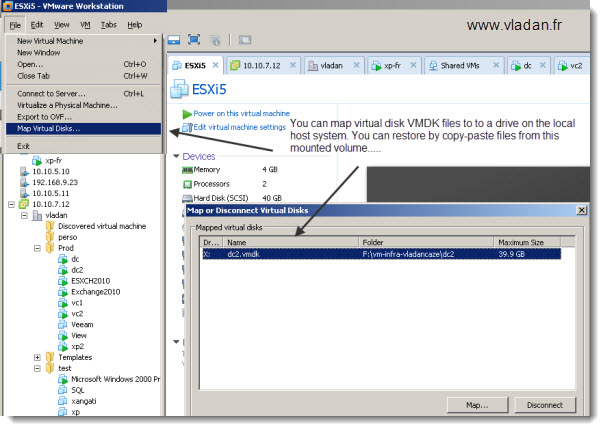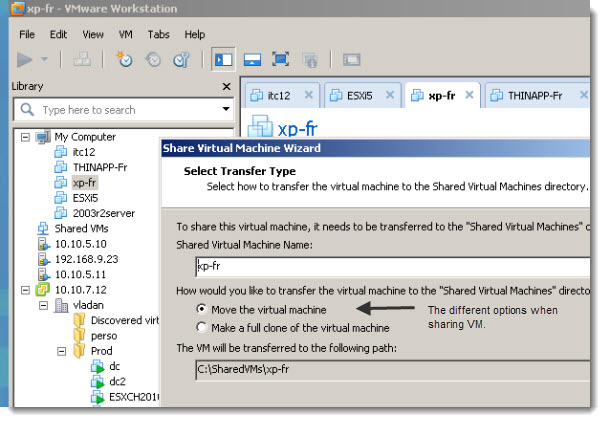- Vm Workstation 8.0 Download
- Vm Workstation 802.1q
- Vm Workstation 8 Download
- Vm Workstation Download For Windows 8
Jan 24, 2014 11:23PM edited Jan 24, 2014 11:23PM in Oracle VM Server for x86 Dear Gurus, I have downloaded Oracle Linux 5.8 (V31119-01), I want to install in VMware workstation 8.0.4 built 744019. How to install Kali Linux on VMware Workstation 16 Pro virtual machine (everyone can do it like a video) Part 2(+ Part 3) – How to Install macOS Big Sur 11.4 on Windows 10 via VirtualBox VMware Workstation Pro 16.1.2 License Key 2021 Latest.
Are you still using VMware Server? Now is the time to consider VMware Workstation 8 as an alternative.
In June 2011 VMware ended support for VMware Server and while you are free to continue using VMware Server, you will no longer gain the benefits of newer technologies or support. If you are a software developer, QA engineer, or IT administrator who cannot meet the hardware requirements or dedicate a server to use our free VMware vSphere Hypervisor, we believe the recently released VMware Workstation 8 offers an excellent alternative to VMware server.
Simplicity
Workstation can be easily installed on existing Windows or Linux systems with minimal hardware requirements. Workstation can run on many versions of Windows and Linux including Windows 7 and Ubuntu 11.10. Furthermore, it’s very easy to try Workstation and see if it meets your needs by downloading our free 30-day trial.
Run as a Server
Workstation 8 has a very exciting new feature that allows a user to “share” their VMs. Now you can run virtual machines as a service and it will no longer require a user to always be logged in. This service is the same service used by other VMware products such as VMware Server and ESX and it provides many of the capabilities you need to get your work done. To run as a service and share a VM, it’s a simple process of dragging and dropping a VM into the shared VM’s folder. (click to zoom images)
Control
Shared VMs include an extensive permissions interface to allow administrators to control who can access them and what the user can do. The VMs can even be accessed remotely by another instances of Workstation. We believe that many of our users will find the sharing function to be a great way to run server operating systems in more of a production like environment.
Transition to the cloud
If you choose to start with Workstation there is a simple process to migrate your VMs to vSphere at any point in the future. Virtual machines running in Workstation are compatible with vSphere. Even better, Workstation makes is very easy to move virtual machines to vSphere. Workstation can be remotely connected to vSphere enabling a ‘drag and drop’ upload of VMs from Workstation to vSphere.
Migrate from VMware Server
To run Workstation on the same hardware as VMware Server, follow the steps below:
1. Shutdown VMs on VMware Server. Check to ensure the hardware meets VMware Workstation’s system requirements.
2. Uninstall VMware Sever before installing VMware Workstation. Be sure not to delete any virtual machines.
3. Install VMware Workstation.
4. VMs can be moved to the “My Virtual Machine” folder under “My documents” if desired, but this is not required.
5. Continue with “final steps” below.
To run Workstation on separate hardware from VMware Server, follow the steps below:
1. Install VMware Workstation on selected hardware.
2. Shut down the VMs on VMware Server.
Vm Workstation 8.0 Download
3. Copy the VMs from the VMware Server hardware to the “My Virtual Machine” folder under “My documents” on the hardware running VMware Workstation.
4. Continue with “final steps” below.

Final Steps
1. Once VMware Workstation is running, follow these steps to get each virtual machine up and running.
2. From the “File” menu, select “Open” to open the file dialog box.
3. Select a virtual machine. The selected VM will now be listed in the virtual machine library under “My Computer”.
4. To run the VM locally, power on the VM.
5. To run the VM in Workstation’s server mode, within the virtual machine library, drag and drop the VM on top of the “Shared VMs” icon.
6. The “Share VM Wizard” will open. Enter a name, and choose the option to move or clone the VM, and then click “Finish”.
7. Power on the VM. At the prompt: “moved” or “copied”, select “moved”.
8. To control access to the VM, right click on the VM’s icon and select “manage”, “Permissions…”
9. Repeat the above steps for each VM.
Try Workstation today.
If you would like to discuss this in more detail, please join us in the VMware Workstation community.
Are you still using VMware Server? Now is the time to consider VMware Workstation 8 as an alternative.

In June 2011 VMware ended support for VMware Server and while you are free to continue using VMware Server, you will no longer gain the benefits of newer technologies or support. If you are a software developer, QA engineer, or IT administrator who cannot meet the hardware requirements or dedicate a server to use our free VMware vSphere Hypervisor, we believe the recently released VMware Workstation 8 offers an excellent alternative to VMware server.
Vm Workstation 802.1q
Simplicity
Workstation can be easily installed on existing Windows or Linux systems with minimal hardware requirements. Workstation can run on many versions of Windows and Linux including Windows 7 and Ubuntu 11.10. Furthermore, it’s very easy to try Workstation and see if it meets your needs by downloading our free 30-day trial.
Run as a Server
Workstation 8 has a very exciting new feature that allows a user to “share” their VMs. Now you can run virtual machines as a service and it will no longer require a user to always be logged in. This service is the same service used by other VMware products such as VMware Server and ESX and it provides many of the capabilities you need to get your work done. To run as a service and share a VM, it’s a simple process of dragging and dropping a VM into the shared VM’s folder. (click to zoom images)
Control
Shared VMs include an extensive permissions interface to allow administrators to control who can access them and what the user can do. The VMs can even be accessed remotely by another instances of Workstation. We believe that many of our users will find the sharing function to be a great way to run server operating systems in more of a production like environment.
Transition to the cloud
If you choose to start with Workstation there is a simple process to migrate your VMs to vSphere at any point in the future. Virtual machines running in Workstation are compatible with vSphere. Even better, Workstation makes is very easy to move virtual machines to vSphere. Workstation can be remotely connected to vSphere enabling a ‘drag and drop’ upload of VMs from Workstation to vSphere.
Migrate from VMware Server
To run Workstation on the same hardware as VMware Server, follow the steps below:
1. Shutdown VMs on VMware Server. Check to ensure the hardware meets VMware Workstation’s system requirements.
2. Uninstall VMware Sever before installing VMware Workstation. Be sure not to delete any virtual machines.
3. Install VMware Workstation.
4. VMs can be moved to the “My Virtual Machine” folder under “My documents” if desired, but this is not required.
5. Continue with “final steps” below.

To run Workstation on separate hardware from VMware Server, follow the steps below:
1. Install VMware Workstation on selected hardware.
Vm Workstation 8 Download
2. Shut down the VMs on VMware Server.
3. Copy the VMs from the VMware Server hardware to the “My Virtual Machine” folder under “My documents” on the hardware running VMware Workstation.
4. Continue with “final steps” below.
Final Steps
1. Once VMware Workstation is running, follow these steps to get each virtual machine up and running.
2. From the “File” menu, select “Open” to open the file dialog box.
3. Select a virtual machine. The selected VM will now be listed in the virtual machine library under “My Computer”.

4. To run the VM locally, power on the VM.
5. To run the VM in Workstation’s server mode, within the virtual machine library, drag and drop the VM on top of the “Shared VMs” icon.
6. The “Share VM Wizard” will open. Enter a name, and choose the option to move or clone the VM, and then click “Finish”.
7. Power on the VM. At the prompt: “moved” or “copied”, select “moved”.
8. To control access to the VM, right click on the VM’s icon and select “manage”, “Permissions…”
9. Repeat the above steps for each VM.
Vm Workstation Download For Windows 8
Try Workstation today.
If you would like to discuss this in more detail, please join us in the VMware Workstation community.